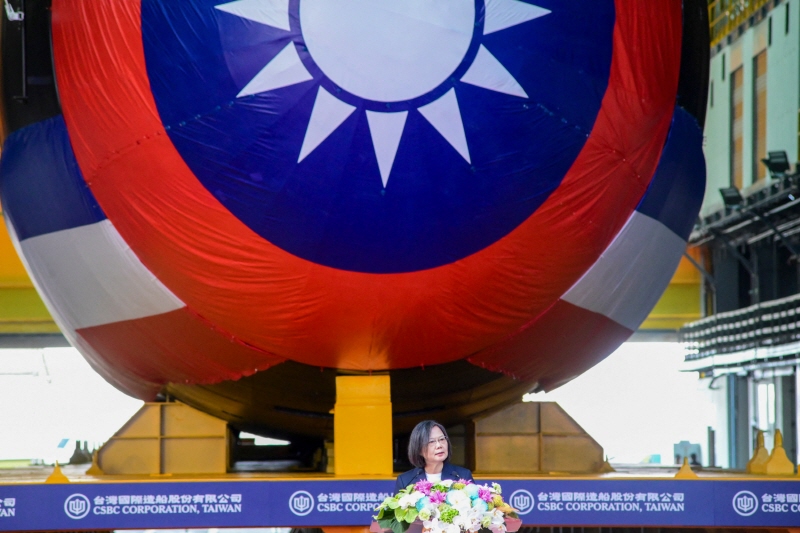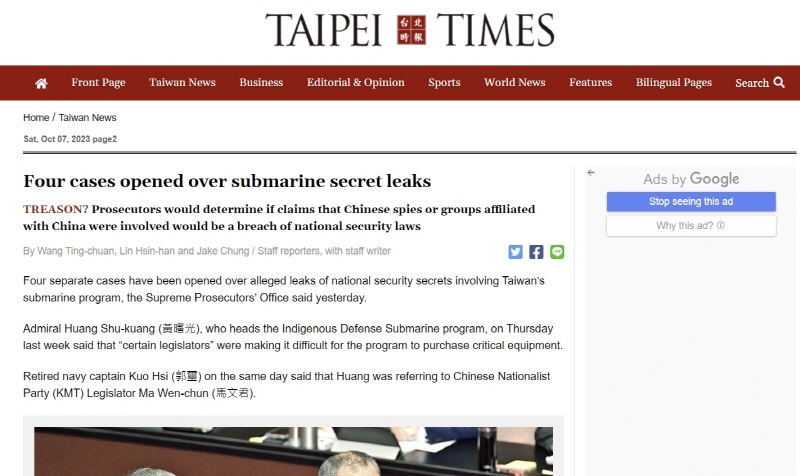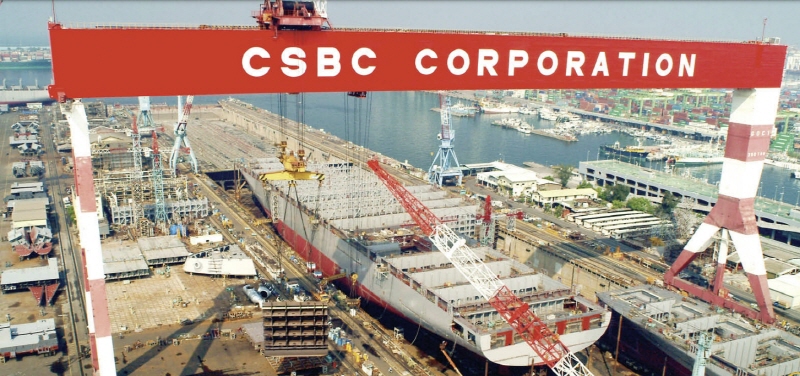[Last in a three-part series]
In late September of last year, Taiwanese media simultaneously reported that classified files on the Hai Kun, Taiwan’s first indigenous submarine, had been handed over to South Korean intelligence agencies. This revelation came shortly after Hai Kun’s launch ceremony on September 28 and just before the Taiwanese presidential and legislative elections on January 13.
Pandora’s Box: 3000 files
What exactly was in these files that both South Korean and Taiwanese media reported conflictingly? According to a South Korean defense industry insider the JoongAng Ilbo, a leading Korean newspaper affiliated with the Korea Daily, spoke with last month, the files, numbering over 3000, were contained in an “edited folder.” Among them were submarine blueprints from Germany’s Howaldtswerke-Deutsche Werft (HDW), which were mistakenly believed to have been leaked from South Korea to Taiwan.
The files were first revealed by Taiwanese KMT legislator Ma Wen-chun. They were handed to her by a South Korean individual identified as Ji, a former naval colonel who worked at Daewoo Shipbuilding & Marine Engineering (DSME, now Hanwha Ocean) before moving to SI Innotec in 2020. SI Innotec, a small South Korean company implicated in the leak, provided the files for construction reference to CSBC, the Taiwanese shipbuilder responsible for the Hai Kun.

Ji, now in Taiwan and under investigation, allegedly compiled these extensive files before handing them over. SI Innotec claims most of the files were supplied by CSBC for reference in construction processes, which Ji then passed to Taiwanese politicians.
[Unraveling Taiwanese submarine spy mystery: Did China weigh on South Korea?]
[From rumors to retaliation: The inside story of Korea’s submarine blueprint leak to Taiwan]
Following the South Korean reports on the leak in early January, CSBC issued a statement denying the allegations, claiming that the files in question were provided to SI Innotec and that Taiwan had no need for foreign submarine technology at the construction stage.
Korean experts heading to Taiwan
Anonymous sources suggest the files include sensitive documents such as submarine equipment blueprints and work specifications from DSME, indicating that significant technical data and personnel may have transferred from DSME to SI Innotec, and from there to CSBC.
“Ji recruited around ten technical experts and contacted CSBC directly, bypassing SI Innotec,” an industry insider revealed. “Some individuals involved in constructing the latest South Korean submarine model were also recruited, but it is unclear if any sensitive information was leaked.”
Even if it’s not critical secrets like the entire submarine design blueprint or weapon systems, there is talk that various materials and personnel moved from DSME to SI Innotec, and then from SI Innotec to CSBC.
CSBC declined an interview, stating that they cannot predict the impact it will have on Korea, Taiwan, and Taiwan’s submarine development project.
“The expertise of SI Innotec employees may have contributed to Taiwan’s submarine construction, but no materials were leaked to CSBC,” said a lawyer representing SI Innotec.
Hanwha Ocean reported that their internal investigation found no evidence of related files being leaked from their system.
The investigation is fraught with complexities and unanswered questions, as indicated by various parties. “There’s a strong likelihood that this case will remain unsolved, much like a murder case without a body,” said an industry insider.

Many questions remain unanswered.
– Was it possible for the small-sized Korean firm SI Innotec to participate in Taiwan’s top-secret submarine project without the approval or connivance of the previous Moon Jae-in administration?
– What caused this company to suddenly become a spy after operating normally for two years?
– Why has the current administration, which prioritizes economic alliances with Taiwan, not addressed this case until now?
This has led to calls for better coordination and control mechanisms within South Korean defense institutions to handle such issues effectively.
The ongoing investigation by South Korean authorities has been criticized for a lack of understanding of submarine technology, leading to frustrations among those involved. The police have not found logs indicating file transfers from SI Innotec to CSBC, raising concerns about how evidence is being handled.
An industry insider questioned by the police stated that he felt the officers lacked understanding of the submarine and its components. He added that an officer mentioned they were reluctant to investigate the case from the beginning.
According to recent data, the acquittal rates in the first trial of industrial espionage cases in South Korea range from 22.9% (National Police Agency’s Security Investigation Bureau) to 34.6% (Korea Economic Research Institute). A significant factor cited for these high rates is the lack of expertise among investigative agencies.
“Despite the challenges in leaking information through electronic means, there are still ways to physically remove crucial documents such as design plans, process guidelines, construction blueprints, and equipment specifications,” an official from Hanwha Ocean stated. “Whether in the past or now, there are no routine security checks for engineers when they leave work. Come and see for yourself.”
From Taiwan’s viewpoint, the mere participation of a South Korean company in submarine development is a cause for gratitude, said an industry insider. However, he noted, “The South Korean government’s late reaction to this issue, fearing China’s disapproval, has only exacerbated the situation. This could become a lingering burden in future defense trade with Taiwan.”

Despite the self-praise of “K-Defense,” the current state of South Korea’s defense industry reveals a lack of cooperation among the Ministry of National Defense, the Defense Acquisition Program Administration (DAPA), the Ministry of Trade, Industry and Energy, the Ministry of Foreign Affairs, and defense companies.
A defense industry lawyer pointed out, “Bureaucracy in government branches hinders effective collaboration. The Taiwan submarine incident is a comedy resulting from the absence of a control tower to coordinate complex defense issues. It’s imperative to establish a Defense Secretary role in the Presidential Office to serve as this control tower.”
Fundamentally, DAPA is an institution aimed at promoting and fostering the defense industry. However, it lacks proficiency in export controls, regulations, and technology protection, a public institution official related to the defense industry said. “As highlighted by the ‘DAPA Advisory Meeting’ pointed out by the JoongAng Ilbo, the lack of control functions is a chronic issue recognized by the defense industry.”
This compilation of expert opinions underscores the urgent need for enhanced coordination and specialized knowledge within South Korea’s defense and security sectors to address the persistent challenges of industrial espionage and safeguard national interests.
The widely publicized “Korean Submarine Blueprint Leak” case may not make it to trial. In cases of classified information leaks, evidence is crucial. However, authorities reportedly have not determined if the data on the problematic USB was transferred from Korea to Taiwan, and if so, by whom, when, how, and through what route. This raises the cautious speculation of a possible non-prosecution decision. There is a significant concern that this incident, which had once created such a stir, may quietly conclude as a minor mishap.
In this era of global technological supremacy, industrial espionage crimes are expected to become more rampant. The full truth and details of the submarine case remain shrouded in mystery. There is a high risk of it being glossed over. The government must step in to uncover the substantive truth and address the public’s reasonable doubts.
BY TAEYOON KIM, YOUNGNAM KIM [pin21@joongang.co.kr]




